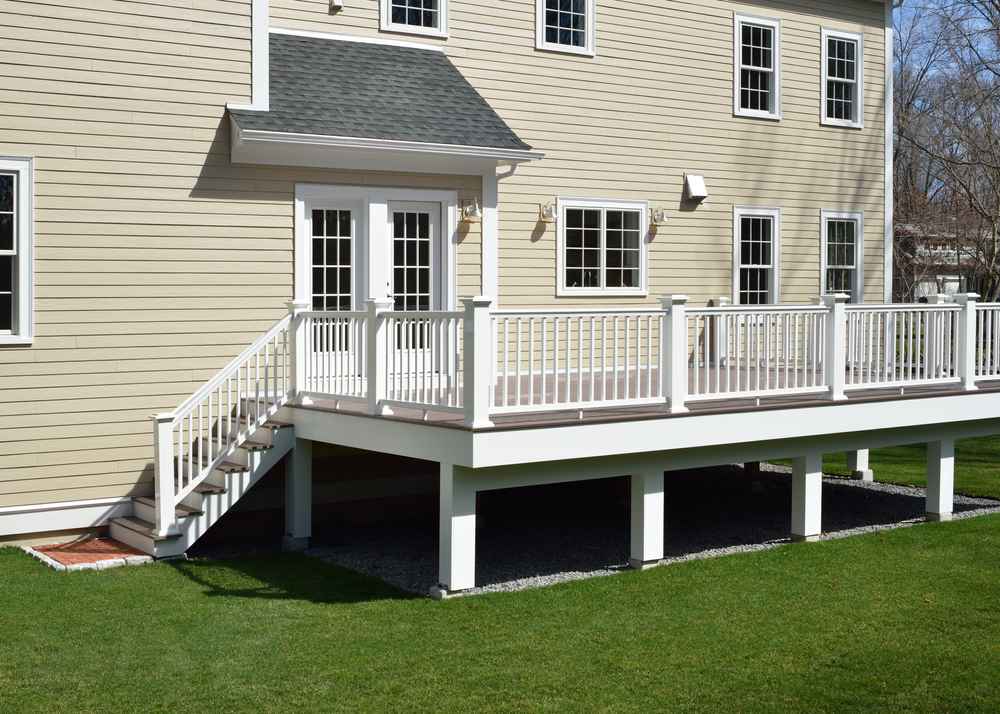There’s something magical about a good deck. It doesn’t just sit there looking pretty—it becomes a part of everyday life. It’s where people gather with cold drinks on summer evenings, where birthday candles get blown out, and where you might quietly sip coffee on a random Tuesday morning. But here’s the thing: none of that really works without a safe, sturdy setup—and that’s where proper Deck and Handrail Installation steps in.
Planning a Deck and Handrail Installation
Before picking out materials or imagining fairy lights, ask this: What’s the deck really for?
Is it the place where everyone’s going to pile in for weekend BBQs? Or more of a quiet nook for reading in the sun? Knowing how it’ll be used shapes everything—from the size and layout to the kind of handrails that make sense.
Here’s what to think through:
- How big is big enough? (Hint: always leave room to walk around furniture.)
- Where will the stairs go?
- Does it need shade, or lighting, or both?
- Who’s using it? Kids? Pets? Elderly folks? That changes the railing setup for sure.
Planning smart from the start means fewer headaches (and fewer surprise expenses) down the line.
Deck Material Talk: What’s Worth It?
Not all decks are created equal, and neither are the materials. Some people want something rustic and traditional. Others want low-maintenance and modern.
Here are some of the usual suspects:
- Pressure-treated wood: The budget-friendly go-to. Looks classic but needs sealing and upkeep.
- Cedar or redwood: Naturally beautiful, smells great, and resists rot. Higher price, but fewer regrets.
- Composite: A fan favorite lately. No splinters, no sanding, and very little maintenance. More expensive upfront, but a dream in the long run.
And for handrails?
- Wooden rails: Timeless and warm, but expect to paint or stain them now and then.
- Metal or aluminum: Clean, modern, and durable—especially if you want something low-fuss.
- Cable or glass panel systems: Great for preserving views and pulling off a sleek design.
Handrails: Not Just for Looks
If a deck is the stage, the handrails are the frame. They make it safe, sure, but they also tie the whole look together. A good handrail should be strong, easy to grip, and kind of invisible—until someone needs it.
Here’s what to aim for:
- Correct height (usually between 34–38 inches)
- Solid grip (something your hand fits around comfortably)
- No huge gaps (anything over 4 inches could be a safety risk)
- Looks that match the deck vibe (no mismatched materials if it can be helped)
Some people even sneak in LED lighting strips under the handrail. Looks great. Helps after dark. Kind of genius.
The Most Common Deck and Handrail Installation Mistakes (And How to Avoid Them)
Here’s where things get messy. Too many rushed or DIY jobs miss the mark—and that usually shows up a few months (or rainstorms) later. These are the usual missteps:
- Skipping permits or code checks
- Not using the right fasteners or brackets
- Building with untreated wood in exposed spots
- Forgetting drainage or slope planning
- Handrails that feel like afterthoughts
The fix? Working with pros who’ve done this a dozen times before. That’s where the difference lies between a deck that looks great for a year and one that’s still standing strong a decade later.
Why Professional Installation Pays Off
Look, YouTube tutorials are great. But there are some jobs that just feel better in expert hands. Deck and Handrail Installation is definitely one of them.
Here’s what seasoned installers bring to the table:
- Precision: They get those clean lines and tight angles right the first time.
- Speed: A project that might take you a month gets done in days.
- Access to better materials: Pro teams often get better quality or custom-order stuff regular folks can’t.
- Warranties: Most solid companies stand by their work, which takes a whole lot of pressure off your shoulders.
Keeping Your Deck in Tip-Top Shape
Once it’s done, maintenance keeps it looking great. And no, it doesn’t need to be a second job. Just a few smart habits:
- Sweep off leaves and dirt every now and then
- Wash it with deck cleaner once or twice a year
- Seal wood decks every 1–3 years, depending on sun exposure
- Check rails and steps after storms or heavy use
- Use furniture pads to prevent scuffing
Even the toughest materials appreciate a little love.
Frequently Asked Questions
How long does Deck and Handrail Installation usually take?
Most average projects take 5–10 days, depending on size and weather.
Do I really need a permit for my deck?
Usually, yes. Especially if it’s attached to the house or a certain height above ground. A pro can help with all that.
What’s the most low-maintenance option?
Composite decking with aluminium or cable handrails is a solid set-it-and-forget-it combo.
Conclusion
Decks aren’t just outdoor floors. They’re the heart of backyards. And Deck and Handrail Installation isn’t just about getting it done—it’s about getting it right. That way, every birthday party, lazy Sunday, or impromptu dance session out there feels effortless and secure.
Whether it’s building from scratch or upgrading what’s already there, putting time and care into the process pays off in every way that matters. It’s not about going fancy—it’s about making space that feels like home, just with more fresh air.
Looking to bring your dream deck to life? BME Building Solutions is ready when you are.


